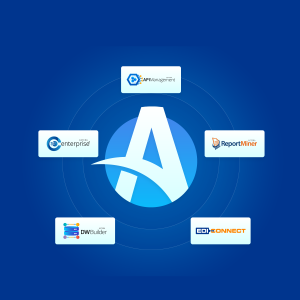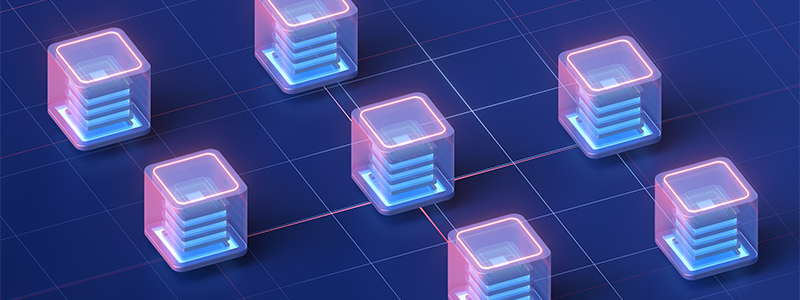As businesses continue to accumulate data at an unprecedented rate, the need for efficient and effective data management solutions has become more critical than ever before. However, traditional data management methods often require coding knowledge and technical expertise, making it challenging for non-technical users to manage and integrate data efficiently. Astera’s no-code data pipeline solution addresses this problem and helps businesses achieve streamlined data management without writing a single line of code.
At Astera, our focus is on helping our customers achieve their goals through our solutions. Our no-code data pipeline tool is designed to cater to businesses of all sizes and industries, enabling them to automate data integration processes, improve data accuracy, and make informed decisions.
What Are Data Pipelines?
Data pipelines are a critical component of modern data-driven businesses. They are responsible for collecting, transforming, and moving data from various sources to a central location for analysis and decision-making. Data pipelines can process data from different types of sources, including databases, files, and applications, and then store them in a central repository such as a data warehouse or a data lake.
With data pipelines, organizations can gain valuable insights from their data, including identifying customer trends, optimizing business processes, and developing new products or services. However, building data pipelines traditionally requires a lot of manual coding, which is time-consuming and prone to errors. This is where no-code solutions come into play.
Steps to Build a Data Pipeline
Building a data pipeline involves several steps, including:
- Data Extraction: Data extraction involves extracting data from various sources, such as databases, files, and APIs. Data can be extracted using a variety of methods, including batch processing, real-time streaming, or event-driven triggers.
- Data Transformation: The extracted data needs to be cleaned, filtered, aggregated, and structured in a way that is suitable for analysis. This step involves a range of operations, such as data mapping, data cleansing, and data enrichment.
- Data Loading: The transformed data is then loaded into a central repository, such as a data warehouse or a data lake, where it can be accessed and analyzed. The loading process may involve inserting data into a pre-existing database schema or creating a new schema if required.
It’s important to note that data pipelines can follow different architectural patterns, including ETL (Extract, Transform, Load) and ELT (Extract, Load, Transform). While we’ve primarily focused on the traditional ETL pipeline approach in the previous steps, the rise of modern data infrastructure has led to the emergence of ELT pipelines as well. Data pipelines differ from ETL pipelines in that data pipelines are more generalized and focus on the end-to-end processing of data, encompassing tasks beyond ETL.
ELT offers the advantage of loading raw data into the target repository first and then applying transformations within the repository itself. This approach takes advantage of the advanced capabilities of modern data warehouses and data lakes, enabling greater flexibility and scalability in data processing.
What Is a No-Code Data Pipeline?
A no-code data pipeline lets you automate data flows without writing any code. You can integrate data from multiple sources, transform and clean it, and load it into a destination – all with an easy to use visual interface.
No-code data pipelines are built on top of traditional data integration platforms, but they hide all the complexity behind a simple drag and drop interface. Anyone can build a data pipeline, you don’t need to be a developer or data engineer.
Some of the things you can do with a no-code data pipeline include:
- Extract data from sources like databases, APIs, files, and cloud apps
- Transform and clean the data by filtering, mapping, joining, aggregating, etc.
- Load the data into a destination like a database, data warehouse, or file
- Schedule and orchestrate data pipelines to run on a recurring basis
- Monitor data pipelines and get alerts if there are any issues
No-code data pipelines make it easy to integrate data and automate workflows without needing to write SQL, Python, or other code. They give business users and analysts more independence and control over their data.
While no-code tools can’t match the flexibility and power of code, they provide a simple way to solve many common data challenges. And if you ever need more customization, some no-code data pipelines let you drop down to code when needed.
No-code data pipelines are making data integration and automation accessible to everyone. They provide an easy way to unlock the value of your data without needing technical skills. Your data workflows have never been simpler!
The Benefits of No-Code Data Pipelines
No-code models have transformed the way businesses manage and integrate data. The benefits of no-code data pipeline include:
- Higher Productivity – It enables businesses to automate data integration processes, reducing manual work, and increasing productivity. With our solution, businesses can save time, focus on critical tasks, and achieve more with less.
- Lower Skill Barriers – Creating and managing no-code pipelines requires no coding knowledge or technical expertise, making it easy for non-technical users to manage and integrate data. This allows businesses to reduce their reliance on IT resources and empower their employees to manage data more effectively.
- Ease of Learning – The interface is user-friendly, making it easy for users to learn and navigate. This enables businesses to onboard employees quickly, reduce training time, and get up to speed quickly.
- Centralized Data Management – No-code data pipeline allows businesses to integrate data from multiple sources into one centralized database. This results in more efficient data management, better data accuracy, and informed decision-making.
- Flexible and Scalable – These pipelines are highly flexible and scalable, allowing businesses to adapt quickly to changing data management requirements. With our solution, businesses can easily add new data sources, create new workflows, and scale up or down as needed.
Key Features of Astera’s No-Code Data Pipelines

Astera’s no-code data pipeline comes with a variety of key features that enable businesses to manage and integrate their data efficiently. Some of the key features include:
- Intuitive Drag-and-Drop Interface – Astera’s suite of tools comes with an intuitive drag-and-drop interface that enables users to design and manage data integration workflows without any coding knowledge. Users can easily drag and drop pre-built components to create workflows, making it easy to automate data management processes.
- Pre-built Connectors – Astera’s no-code data pipeline offers pre-built connectors for a variety of data sources, including databases, cloud applications, and flat files. This allows businesses to quickly connect to and integrate data from multiple sources.
- Powerful Transformation and Mapping Capabilities – Astera’s visual interface comes with powerful transformation and mapping capabilities that enable users to manipulate and transform data. Users can easily map data fields, apply filters and transformations, and aggregate data using pre-built functions.
- Advanced Data Validation and Profiling – Astera’s no-code data pipeline includes advanced data validation and profiling features that ensure data accuracy and consistency. Users can easily validate data against predefined rules, detect and correct data errors, and profile data for quality analysis.
- Workflow Automation – Astera’s no-code data pipeline allows businesses to automate data management workflows, reducing manual work, and increasing efficiency. This enables businesses to achieve their data management goals more quickly and with less effort.
Overall, Astera’s no-code platform is a comprehensive solution that offers a wide range of features for efficient data management and integration. With its intuitive interface, pre-built connectors, powerful transformation capabilities, and real-time data integration, businesses can streamline their data management processes and achieve their data management objectives efficiently and effectively.
Case Study: How Astera’s No-code Data Pipeline Helped the Alshaya Group
The Alshaya Group is a leading international retail franchise operator with diverse business units and large-scale operations. They needed a solution to automate data integration and improve data accuracy. Astera’s no-code data pipeline came to their rescue.
Astera Centerprise helped the Alshaya Group automate data integration across all their business units. These units included retail, logistics, and finance. With Centerprise, Astera’s ETL tool, the Alshaya Group streamlined their data integration process. It was able to reduce manual data entry, resulting in significant time savings and improved data accuracy.
Astera’s no-code data pipeline helped the Alshaya Group achieve a more efficient and accurate data integration process. Thus, allowing them to make better business decisions and improve their operations.
Case Study: Michigan Education Association
The Michigan Education Association (MEA) needed a solution to automate their manual processes and manage their member data effectively. They partnered with Astera and implemented its opted for its Centerprise Data Integrator platform to speed up their data integrations.
Astera’s no-code data pipeline helped MEA integrate their member data from multiple sources into one centralized database. With Centerprise, MEA automated their member data management, reducing manual work and eliminating data entry errors. The platform also allowed MEA to track member engagement in real-time. This helped them to identify potential areas of improvement and create targeted outreach campaigns.
Astera’s no-code data pipeline helped MEA achieve a more streamlined and efficient data management process. This, enabling them to make informed decisions and improve member engagement.
Conclusion
No-code data pipelines are a game-changer for businesses looking to streamline their data management processes. With its numerous benefits, businesses can achieve their data management goals with efficiency and ease. If you’re looking to transform your data management processes, get in touch with Astera today. See how our no-code data pipeline can help you achieve your objectives.





